Aether: the Science of Demonic Torments
Dissecting the concepts of Aether, the Nervous System, Imagination and the Methodology of Demonic Temptation.
Given that we have just begun Great Lent in the Orthodox Church, I figured it would be fitting to address the phenomenology of demonic temptations. All those who choose to participate in the ascetic struggles of Lent are volunteering to ‘enter the Arena.’ In this Arena, God releases demons for us to battle in spiritual combat so that we may increase in our strength and glory.
For all of my spiritual gladiators out there, I wish to share my research and my (extremely meager) experience in regards to psychic attacks from the Enemy and his legions.
This is a longer article, so be patient with me for this first part about aether. It is necessary to understand the nature of the battleground in order to overcome our opponents.
Aether: the Substance of Spirits
This may seem like a silly question: what are demons made of?
Are demons material or immaterial? Can their attacks be physical or are they purely mental?
To answer these questions, we need to examine the concept of the fifth classical element: aether (commonly referred to today as ‘spirit.’)
Of course, we are all familiar with the other four classical elements. But this lesser known fifth element is the ‘head’ which governs and facilitates the movement of the other four ‘limbs’ of the cosmic body. The understanding and interpretation of this element has varied slightly from culture to culture, but the overall theme has remained consistent: this is the element which constitutes the heavens and serves as the bridge between the material and immaterial realms.
The Aether in Western Philosophy
In Western philosophy, we can see the concept of aether beginning as far back as Plato and Aristotle. In Plato’s Timaeus, the element of aether is lumped in with the element of air, but it is considered to be the “most translucent/brightest” kind of air. Plato says that aether is the extremely fine substance through which the stars and planets move, sort of like ‘cosmic winds’ blowing on the planetary ‘sails.’
However, Aristotle was the first to separate aether from air and put it into a category of its own. He considered it to be the ‘first’ of the classical elements from which the other four proceeded from:
"The region above the moon, where the stars and planets are, is not made of the same matter as the earth but of a purer, unalterable element—this is what we designate as aether."
- Aristotle, Meteorologica
Aristotle’s cosmology was similar to that of his contemporaries: the first heaven was the sublunar realm where everything was in temporal flux, whereas the second heaven above the Moon was a timeless realm of perfect order. The movements of the stars and planets are unchanging and predictable, as opposed to the chaos down here on Earth. Therefore, Aristotle posited that there must be a fifth element that moved in a different way compared to the four terrestrial elements:
"The natural order of the universe requires that the upper regions, being composed of aether, are in a state of perfect circular motion and are not subject to the corruption that affects the four elements of the earth."
- Aristotle, On the Heavens
However, throughout the centuries, the concept and definition of aether began to evolve over time. In the medieval and renaissance periods, aether began to take on the name of “quintessence.” Alchemists believed that this was the substance that stars were made out of; since there was very little of it here on earth, the stars which are composed of this spiritual substance could easily affect the things on earth which were made of denser and more coarse elements.
“Man is a microcosm, or a little world, because he is an extract from all the stars and planets of the whole firmament, from the earth and the elements; and so he is their quintessence.”
- Paracelsus
This concept of quintessence would go on to influence early modern physics of the 17th to 19th centuries, serving as a hypothetical medium which would explain how light waves can travel through the vacuum of space. Aether even makes its way up to 20th century physics, with certain physicists wanting to use the term to describe the phenomena of ‘dark matter’ and ‘dark energy.’
So while the concept of aether in the West has changed a lot over time, the general thread which runs through all of these ideas can be boiled down to something like this: there is some sort of extremely subtle substance which comprises the heavens and serves as a pervasive and underlying substrate for all physical energy and matter. It is the bridge between the material and immaterial.
The Aether in Eastern Philosophy
The notion of a fifth element which surpasses the four terrestrial elements is by no means a concept which is unique to Western thought. If we look to the East, we find the Sanskrit word ‘akasha’ in Hinduism and Vedic philosophy. Akasha in English is often translated to “ether” or “space.” Just as humans breath air, it is said that spiritual beings breath akasha.
Interestingly enough, akasha is also thought to be the first-born among the elements and the source of the other four:
"From the Self came akasha;
from akasha came air;
from air came fire;
from fire came water;
from water came earth.”
- Taittiriya Upanishad, c. 6th century BC
Given the cyclical nature of Hindu and Buddhist cosmology, akasha is thought of as the substance from which all things come from and to which all things return:
"As a spider sends forth and draws in its thread, as plants arise from the earth, as hair grows on the head and body of a living man—so does everything arise here from Ākāśa."
- Mundaka Upanishad, c. 5th century BC
"All these beings take their rise from Ākāśa alone. They return into Ākāśa and Ākāśa is greater than these; Ākāśa is the final resort."
- Chandogya Upanishad, c. 8th–6th century BC
But this is not the only role the akasha plays in Vedic cosmology, it is also considered to be the element in which the human heart resides. Obviously, we are not referencing the physical heart here, but rather the psychic energy center which corresponds to the physical heart. The heart is considered to be the center of consciousness in both Hinduism and Orthodox Christianity; it is the locus of our thought, emotions, and the essence of our being. It is also the source of prana, or ‘life force’ (known as qi in Chinese philosophy).
"In Ākāśa, indeed, is the heart placed; in the heart, indeed, is prāṇa (life force) placed."
- Prashna Upanishad, c. 6th–5th century BC
This is why repentance and seeking stillness of the heart is so heavily emphasized in Orthodox Christianity. The heart is the location of the nous, which is commonly referred to as the intellect and “the eye of the soul”, which serves as the psychic gateway to the aether through which we can directly apprehend divine truth.
"Just as the dolphin stirs and swims about when the visible sea is still and calm, so also, when the sea of the heart is tranquil and still from wrath and anger, mysteries and divine revelations are stirred in her at all times to delight her."
- St. Isaac the Syrian, 7th century AD
Which leads us to our final point on the aether:
The Aether in Orthodox Christian Theology
Now some of you Christian readers out there might be wondering: what does this have to do with Christianity? I will refer you to this extremely interesting letter written by the 19th Century saint Theophan the Recluse:
“In case you have not forgotten, at one time I began talking with you about an exceedingly subtle element that is finer than light. It is called ether. Let us suppose that it exists as a matter of fact, and not just in name. I recognize that such a very subtle element exists, and that it penetrates and passes everywhere, serving as the smallest particle of material substance.
Along with this, I suppose that within this element soar all the blessed angels—the angels and divine saints—who are themselves garbed in a kind of raiment made of that very same element. The covering of our soul (understand this word to refer also to the spirit, which is the soul of our human soul) is also made of this very same element. The soul itself is the immaterial spirit; but its covering is made from this ethereal immaterial element. Our bodies are coarse; but that covering of the soul is very fine and serves as the intermediary between the soul and body. Through it the soul acts on the body and the body on the soul.”
St. Theophan’s description of this element’s behavior perfectly mirrors the classical understanding of aether. Aether is a substance which sits right on the border between the material and immaterial. Given it’s immensely fine nature, it provides the closest thing to a scientific explanation for the causation of certain miracles:
The element of which we are speaking is everywhere, and meets no obstacle to itself anywhere. Sunlight passes through glass; while the element can also pass through glass, it also permeates walls, the ground and everything else. Just as it is able to pass through everything, when that is necessary (just as the Saviour passed through into the room when the Apostles were behind a locked door).
As we stated earlier, aether is the foundational element which gives rise to the lower four elements and gives them their form. If we are to assume this model of reality is true, we have a totally comprehensive mechanical explanation for both magic and miracles. If someone were to have mastery over the element of aether, whether it is through the evil means of sorcery or the good means of divine grace, that means they would be able to manipulate the four lower elements which arise from aether.
St. Theophan also describes aether as the medium through which prayers are heard. He equates prayer to a recently invented piece of technology: the telegraph.
“Do you know how the electric telegraph works in Saint Petersburg? For example, they start up a particular piece of equipment and, in the same instant, that action in Saint Petersburg is reflected in a similar piece of equipment in Moscow and the very same motion occurs. Why does this happen like this? Because the equipment is of the same type and because the wire connecting them is fitted to them. The action of the telegraph is like our prayer. We, along with the Saints, are like 2 pieces of the same kind of equipment, and the medium in which the Saints dwell and with which our souls are surrounded [the aether], that is the wire.”
As we saw earlier in Vedic cosmology, the spiritual heart is dwells in the aethric realm. Anyone who knows anything about Orthodox theology has probably heard of the concept of “prayer of the heart.” One of the main goals of Orthodox monasticism is to move the mind downwards into the heart and achieve this mode of prayer. Given the explanation provided here by St. Theophan, it is no wonder why this is such a high priority. Getting in touch with the heart through pray is essentially cultivating the skill of communicating through the aether with God, the saints, and the angels.
The Mechanisms of Demonic Attacks
Okay, so I’ve rambled for about 7 minutes about this esoteric element. You are probably wondering at this point what this has to do with my original thesis about demons and Lent. The reason why I bring up the concept of aether is because it not only allows us to commune with holy saint and angels, but it is also the medium through which demons attack us:
“Besides the angels and Saints, there are dark powers that are invisible to us that also see. However, when the soul is bright, they are unable to look at it. Like bats who fear the light, they look at it only when it begins to darken. They run in packs everywhere, and as soon as they notice a darkened soul, they immediately fall upon it and begin to twist it to and fro with thoughts, passionate desires, and disturbance of feelings.”
- St. Theophan the Recluse
If we look to the Philokalia, which is a compilation of ancient texts written by Orthodox Christian monastics, we will find entire guidelines detailing the nature of demonic attacks and how to resist them. Most of these writings detail exactly what St. Theophan is talking about here; demons tend to attack us through the manipulation of our thoughts, emotions, and bodily drives.
So how exactly do they do this? Through my research and personal experience, I am of the opinion that the demons manipulate our nervous systems through the aether.
The Etheric Body and Physical Injuries
If you are at all familiar with the terminology used in New Age spirituality, you may have heard the term ‘etheric body,’ which is also sometimes referred to as our ‘subtle body’ or our ‘aura.’ St. Theophan’s description of the aether as a “raiment” which serves as the soul’s covering almost perfectly matches the description of the etheric body found in New Age belief systems.
Rudolph Steiner, a theosophist whose ideas and writings would go on to influence much of New Age spirituality, says that the etheric body is a like a fluid made of light:
“the etheric body is more or less luminous and fluidic. Instead of organs there are currents of diverse colours, the heart being a veritable vortex of forces and streaming currents. The etheric body is the ‘etheric double’ of the material body.”
I find it extremely fascinating that he describes the heart as a ‘vortex’; it is entirely on par with the Vedic and Orthodox Christian understanding of the heart as the center of our souls.
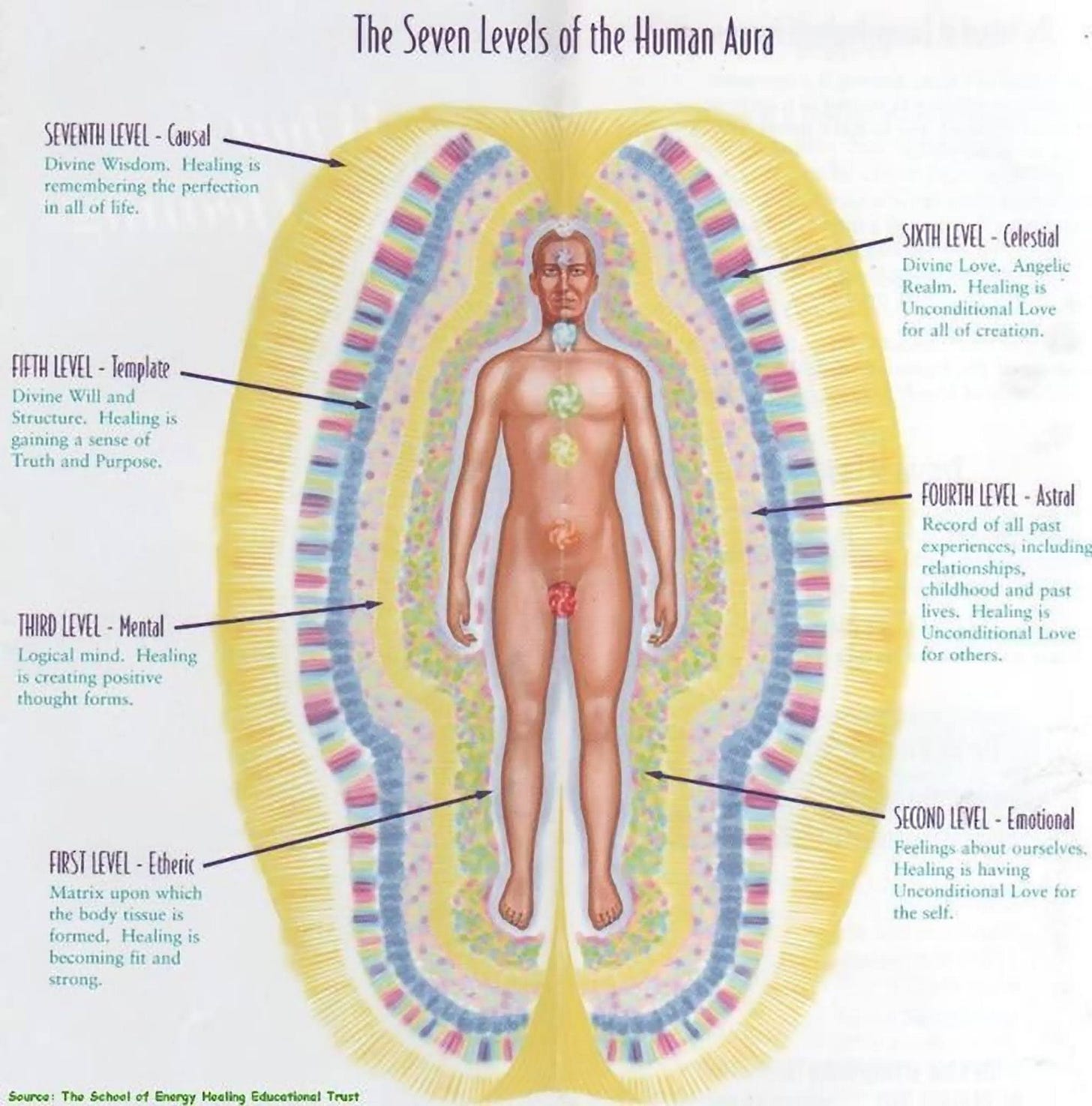
The etheric body is said to be the invisible matrix or ‘blueprint’ which the physical body references in order to maintain its form and develop itself. This would make sense given that aether is the element which oversees and modulates the lower four elements that our physical bodies are made out of. The etheric body is also considered to be the link between the physical body and other subtle bodies, just like how St. Theophan says that the aether serves as the medium for saints and angels to receive our prayers.
However, this also means that whenever demons attack us, they are attacking us through our etheric bodies. Given the fact that the etheric body is the immaterial template that our physical bodies reference, it makes total sense how a demonic attack can lead to physical injuries. The story of St. Anthony the Great is a perfect example of this: during his ascetic struggles in the desert, he was physically attacked by demons.
Another modern example is the story of St. Iakovos, a 20th century monk on Mount Athos, who reportedly was physically attacked by demons numerous times. His injuries included a dislocated shoulder, scratch marks, and even testicular torsion.
We don’t even need to reference Orthodox saints to prove our point here: a few months ago, Tucker Carlson revealed a personal story about being attacked by demons in his sleep. When he woke up, he had scratch marks on his back as if he was physically attacked. The full story can be found in this video here.
Essentially, if a demon can attack the immaterial ‘blueprint’ of your body, then the physical body will sustain damage.
Demonic Stimulation of the Nervous System
Physical attacks by demons are much more rare, so let us turn our attention to their most common form of assault: psychic attacks on the nervous system.
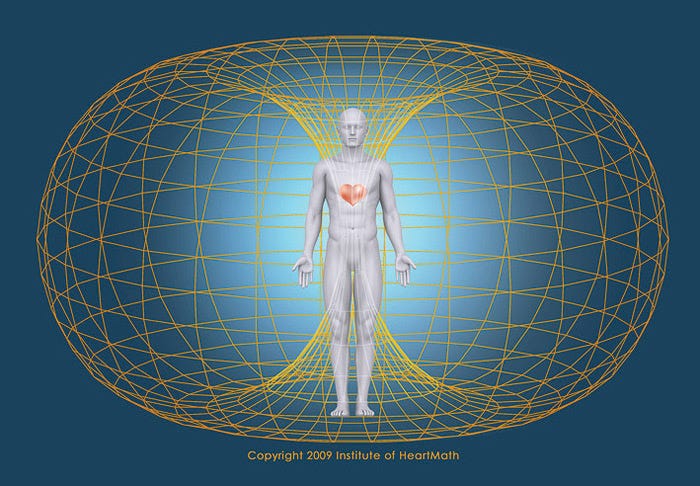
The etheric body is also referred to as the ‘electric body’ and is believed to be closely associated with the electromagnetic field that is produced by the nervous system. If we look to the Philokalia, we will find an interesting passage which implies that demons can “touch” certain parts of the nervous system:
When the intellect attains prayer that is pure and free from passion, the demons attack no longer with sinister thoughts but with thoughts of what is good. For they suggest to it an illusion of God's glory in a form pleasing to the senses, so as to make it think that it has realized the final aim of prayer. A man who possesses spiritual knowledge has said that this illusion results from the passion of self-esteem and from the demon's touch on a certain area of the brain.”
- St. Evagrios the Solitary, On Prayer: One Hundred and Fifty-Three Texts
I have seen numerous tidbits from saints and ascetics who talk about the abilities of the demons to manipulate us; assuming that they can directly affect our nervous systems provides us with a clear mechanism by which they do this.
Demons are said to cause movements in the genital organs in order to arouse lust in their victim. I have also heard it said that they can trip up chanters during church services by causing them to yawn, hiccup, or cause other disturbances in the respiratory system.
These attacks are most effective on those who are unaware of the demons and ignorant to their methods of attack. Christians who begin to gain experience in these attacks will be able to recognize them when they happen and then pray in order to cause the demons to flee. As St. Theophan stated about them, they can not approach a soul which is radiating with the light of God.
Once they realize that they can not attack their victim involuntarily through the nervous system, the demons move on to their next method of attack: stirring up the victim’s memory in order to produce mental images. However, mental imagery, emotions, and thoughts are not associated with the etheric body, they are associated with the astral body.
Astral Light, Memories, and the Imagination
Another term you may have heard of in New Age circles is the ‘astral plane.’ It is believed to be the place we go when we dream, as well as the place where the imagination resides. Those who train themselves in ‘astral projection’ are able to traverse this plane (I don’t recommend this because you will easily be attacked by demons).
How does the imagination and memory work? The saints in the Philokalia generally lay it out like this: the physical body interacts with the world and experiences physical sensations. These physical sensations leave impressions upon the soul, which collects them and organizes them in the mind. When we recall a memory, the soul ‘digs up’ the physical sensations which have been imprinted upon it in order to reconstruct the memory in a mental simulation. Even modern science has proven that memories are not ‘stored’ in the brain like a computer hard drive, they are actually ‘reconstructed’ every single time.
The demons torment us and cause us to sin by ‘stirring up’ certain sensations that have been stored in the soul, causing the mind to generate images and thoughts which lead us towards the actions the demons want us to take:
“Now it seems to me that in our sleep, when the activity of our bodily senses is suspended, it is by arousing the memory that the demons make this imprint. But, in that case, how do the demons arouse the memory? Is it through the passions? Clearly this is so, for those in a state of purity and dispassion no longer experience demonic fantasies in sleep. There is also an activity of the memory that is not demonic: it is caused by ourselves or by the angelic powers, and through it we may meet with saints and delight in their company.”
- St. Evagrios the Solitary, Texts on Discrimination in Respect of Passions and Thoughts
Before I even found this quote, I had a strange personal experience during the first week of Lent that led me to the same conclusion. I normally don’t talk about my personal spiritual life because I don’t think it is appropriate. But because it is so relevant to the topic at hand, I feel compelled to do so.
I was laying in bed, trying to go to sleep. I was fasting pretty intensely the first week of Lent, so various images and fantasies kept bombarding my mind. They were fantasies of food, sex, alcohol, and various other sensual pleasures that were based off of my memory. But I began praying in order to get through them, then I suddenly realized that these fantasies were being stirred up by an external force. Once I realized it was a demon, I began to pray even more fervently. Each fantasy began to dissolve almost as soon as it appeared. Eventually, I began to drift into sleep. But as I began to enter the murky threshold between the waking world and the ‘astral plane’, I saw what the demon looked like behind all of the imagery it was sending me: it looked like a star.
The Stars are Angels and Demons (and Aliens)
The title seems ridiculous. Clearly I am being hyperbolic and using clickbait, right? While I admit I made the title a tad sensational in order to grab your attention, I am going to make the case that the stars we see in the night sky are not what we think they are.
Demons are Projectors, our Passions are the Film
I have become quite good friends with
, we have been talking about the nature of the imagination for several weeks now. I told him about this experience I had, then I realized that it felt exactly like a diagram he had just recently made.The fractal on the left looks remarkably similar to the vision I had of the demon. Angels and demons are purely noetic (intellectual) beings. They don’t have a corporeal form, so that is why we perceive them in our mind’s eye as a series of visible images and physical sensations. This is why when demons take forms in order to frighten us, they are often portrayed a hybrid of different predatory animals.
As St. Evagrios said, the demons stir up these images in our minds based on the passions which are already inside of us. The angels and demons shine their noetic ‘light’ into the nous of the subject; this intellectual light is then filtered through the associated images which have been impressed upon the soul. The demon itself does not plant images within us, it forcefully reveals to us what is already there. I use the analogy of a film projector: the saint, angel, or demon shines a light and our passions are the film containing the images imprinted on the soul.
For example, the demon of lust has a light which ‘highlights’ the sexual imagery which already exist in our heart. Even if we don’t want to think about them, the demon will force the eye of our soul to gaze upon it by shining it’s own light. This is why pornography was referred to by Fr. Seraphim Rose as “the devil’s iconography”; it provides demons with an entire ‘film reel’ of images to stir up within us.
And no marvel; for Satan himself is transformed into an angel of light.
- 2 Corinthians 11:14
When Attacked by Stars, Invoke the Sun of Righteousness
I wrote about how the stars can serve as the physical bodies for angels and demons. If we look at the way St. Theophan talks about saints and angels travelling through the aether, it sounds similar to how a star would view earth:
“They [the saints and angels] occupy a definite space, but when they are enjoined to do so or are permitted, they are immediately transferred to wherever it is necessary by means of the element, and not only do they meet no obstacles, they do not even see them. When necessary, they are transferred, but when it is not necessary, they stay in their own space and see in every direction what is there and what is happening there. When their eyes turn toward earth, that is, toward us sinners, they see us clearly too. Not our coarse bodies, because that is not how they see us. Rather, they see our very souls, as they are. They do not see directly, but by means of the soul’s covering, which is like their own, and like the element in which they live, because the state of the soul is accurately reflected by its covering.”
- St. Theophan the Recluse
I recently heard a story in the Synaxarion (the Lives of the Saints) that further solidifies this idea. Saint Ephraim, one of the Seven Hieromartyrs of Kherson, was beheaded by pagan idolaters for spreading the Gospel. It is said that when his body was dumped into a rubbish heap, a new star appeared in heaven above his relics.
In the Book of Judges, it very clearly says that certain stars and constellations (demons) fought alongside the Canaanites on the battlefield, but those who love the Lord are likened to the Sun who makes all the stars disappear when it rises:
“Kings came, they fought,
the kings of Canaan fought.
At Taanach, by the waters of Megiddo,
they took no plunder of silver.
20 From the heavens the stars fought,
from their courses they fought against Sisera.[…]
31 “So may all your enemies perish, Lord!
But may all who love you be like the sun
when it rises in its strength.”- Judges 5:19-20,31
If we look at certain hymns from the Akathist to the Theotokos, there are verses which refer to the Mother of God as “the star who causes the Sun to appear” and the “ray of the noetic Sun.” The Mother of God is also referred to as “the paradise of the mind.” Christ is the noetic Sun and by praying to Him, His light shines into our nous. This is why demons (stars) cannot shine their own light into the eyes of our soul if Christ’s light is present. This explains why St. Theophan said that demons only prowl around looking for people whose souls are darkened.
Lent: our Journey Through the Aether
So finally, I am going to bring all of this mumbo-jumbo about the aether back to the topic of Lent. In the Orthodox Church, Lent is an intensive period of fasting where we give up meat, dairy, fish, and olive oil. We essentially become vegans, in addition to abstaining from other pleasures of the body such as drinking alcohol and sexual intercourse with our spouses.
Why do we do all of this? There are many good reasons why, most of which you can find online just by googling “Orthodox Lent.” But there is one niche reason that I just realized for myself: we fast so that we can cultivate the element of aether within ourselves.
Like I said earlier, it makes me very uncomfortable sharing experiences from my own spiritual life. It can lead to pride and vainglory. I am not some great saint nor an extreme ascetic living in the desert, so who am I to write about my meager experience with prayer and fasting? However, my recent experience greatly informs and supplements the topics covered in this article. I recently did a very intense fast for this first week of Lent. I won’t disclose the details of it because Christ commands us to keep these things secret. I will say that it was relatively intense compared to my previous experience, but in comparison to the monks of the Church, it was nothing impressive at all.
After experiencing for myself what intense fasting combined with frequent prayer feels like, I understand why the Orthodox Church prescribes it to all of its members and not just the monks.
Man is a microcosm of creation. We are a miniature representation of the entire universe. We contain within us all five of the classical elements. Our flesh is made of earth, we are filled with fluids of water, we breath in air, we generate heat akin to fire, and our souls are coated with a spirit made of aether.
When we eat food and drink, we are essentially supplementing the coarse terrestrial elements of the body: earth and water. By withholding food from the body, we begin to shift our conscious focus away from the lower physical elements of the body and towards the higher spiritual element of aether.
When I was intenselt fasting, I felt extremely detached from the world. It made me realize how much of our daily lives revolve around the consumption of food. I felt like my spiritual vision was much sharper and I could see demonic assaults coming at me from a distance, allowing me to be better prepared. I was able to notice when I was about to say something I shouldn’t, it was easier to hold my tongue. My prayers felt much more intense and less distracted. When I prayed to the saints, there was a tangible feeling in my soul that someone was hearing me on the other side of the ‘telephone line.’
In summary, for all of the Christians out there that are observing Lent, keep up the good fight. Fasting from foods isn’t some set a rules you must follow in order to earn your salvation; fasting is a toolset that allows us to grow in our spiritual strength against the demonic forces that wish to ruin us.
For all of my readers who don’t fast, I recommend giving it a shot! This is by no means a practice which is exclusive to Christianity.

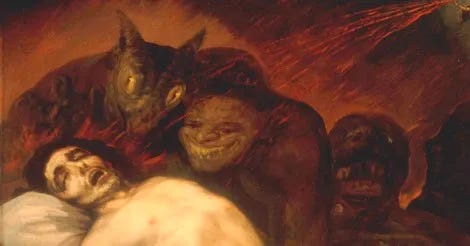


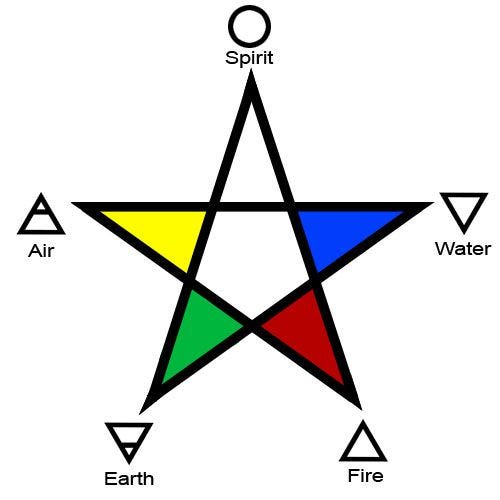

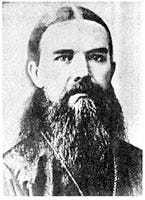

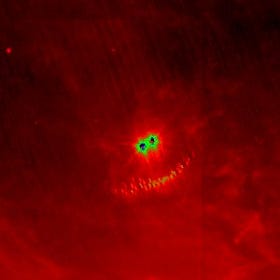
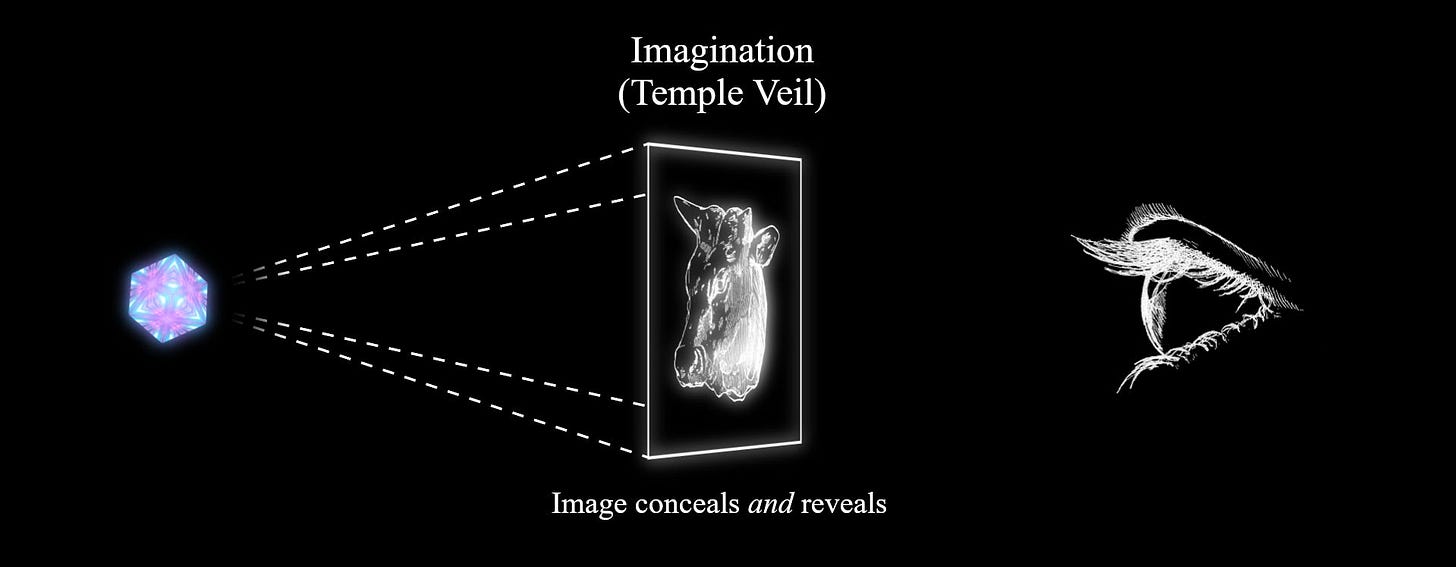
If we are love and our whole being radiates love, then we will attract those in the higher realms that are pure love as they are the driving force of the aether. They are here to guide all of us and we need not fear the other beings who have ill will. Love is stronger than fear. 💫
I read this and read it again. I also read what was written about the stars being demons or angels. Very interesting. I may use parts of this article for a video that I am making about how to pray properly.
We have not been taught how to pray properly. If we did it right, we could control the weather and the elements. We could take control away from the evil ones who use weather weapons against us to destroy and kill. We are given dominion over this world according to Genesis, but we have forgotten how.
Thank you for your articles.